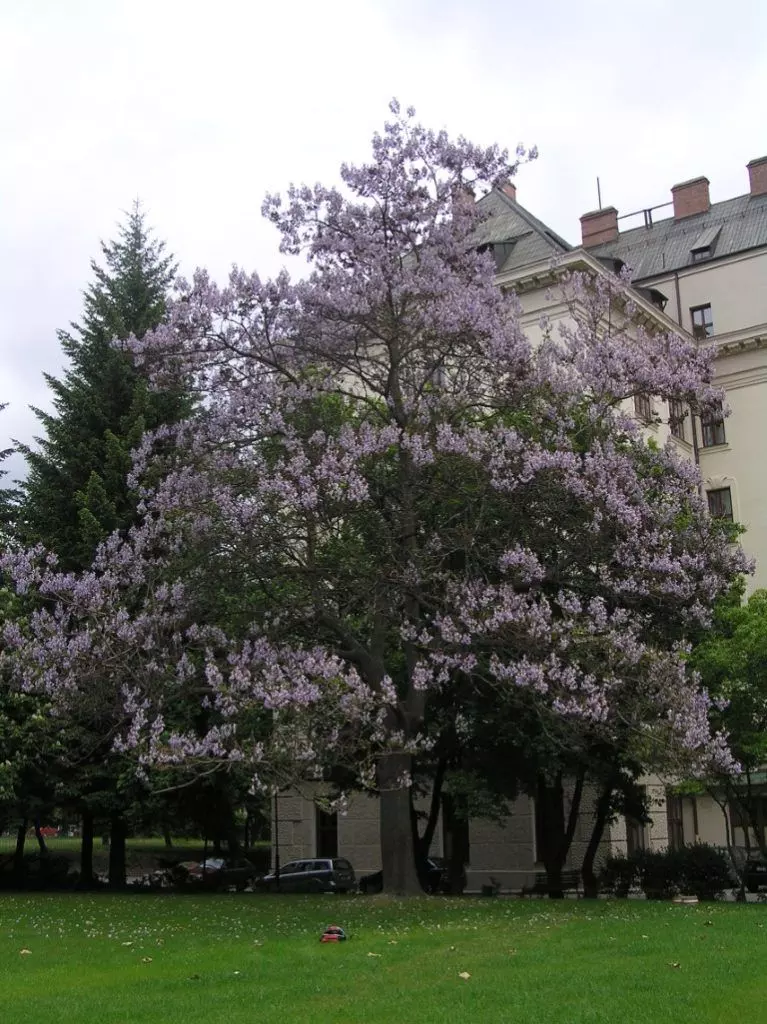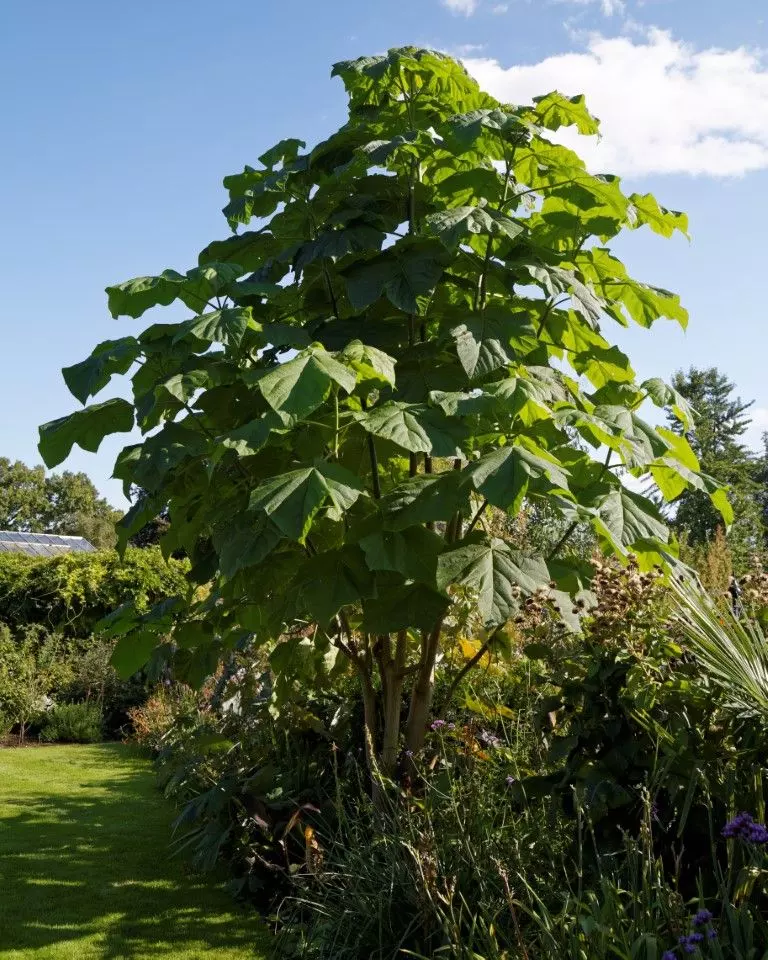Paulownia tomentosa Kiri or Princess tree is the fastest growing tree on the planet. In just eight years, a Kiri seed reaches the size of a 40-year-old oak, 15–25 m (49–82 ft) tall. In just one year it reaches 4.5 m (15 ft) in height.
This tree provides a good shade while absorbs more carbon dioxide than any other tree, emits large amounts of oxygen (21.7 kg of CO2 and returns 5.9 kg of O2 per day), higher than any other known tree by almost ten times.
Paulownia tomentosa kiri has deep roots, perfect for stability, making it strong and reliable, and perfect for growing in areas with steep slopes where trees normally don’t grow.
Due to the deep roots, it also has a higher tolerance for wind, therefore allowing it to grow and flourish in areas where forests may have already failed and saving soil from erosion.
Kiri survives fire (due to its ability to regenerate roots), lives up to 100 years, and sprouts up to 5 times from the same log.

In just eight years, a Kiri seed reaches the size of a 40-year-old oak.
Moreover, it is a remarkably resistant species to pests and diseases. This is due to its low content of oils and resins.
The seeds, very numerous, are about 2.5-4 mm, easily dispersed by the wind. Learn more about how to cultivate princess tree from seeds.
It adapts to poor soils, impoverished by over-cultivation, contaminated with synthetic substances or hydrocarbons, and recovers its properties by providing nitrogen and oxygenating them.
Its wood is low weight and has high resistance to impact and deformation. Its comparative yield per hectare is 163 m³ against 65 m³ for pine. Likewise, the first possible cut in pine is between 15 to 30 years old, being in Kiri at 6 years.
In conclusion, Princess Tree can be of great help against global warming and desertification.
Princess Tree, originally from China, is a very striking tree from which delicate flowers emerge that resemble a trumpet booming every spring.

Of great tradition in China, the tree that was planted when someone born, ended up being cut to become a musical instrument, clogs, and valuable furniture that would accompany the newly married or married new family.
However, a Russian legend claims that the tree was named in honor of the royal princess Paulownia, daughter of the Russian Tsar Paul I. Therefore, different cultures have told stories about this tree.
Quality Paulownia Tomentosa Kiri Seeds (Order it here).
